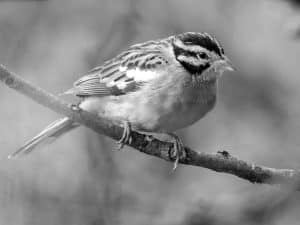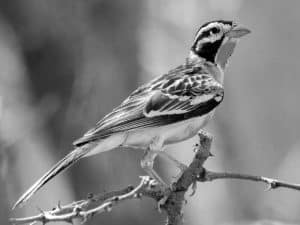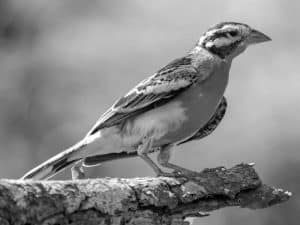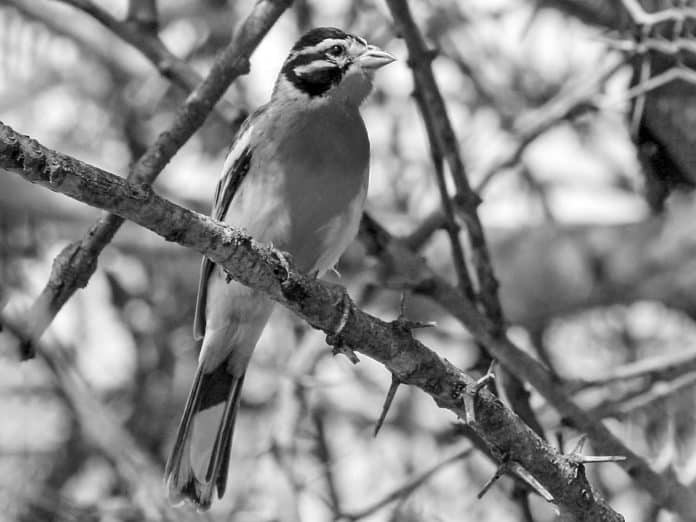Introduction to Somali Bunting in Tanzania
The Somali Bunting in Tanzania, scientifically known as Emberiza poliopleura, is a small songbird that is native to the Horn of Africa region. This elusive and vibrant species is a true gem for avid birdwatchers and nature enthusiasts alike. With its striking plumage and unique behaviors, the Somali Bunting is a captivating bird that has captured the hearts of many who have had the privilege of witnessing it in its natural habitat.

As you delve into the world of the Somali Bunting, you’ll be enchanted by its remarkable adaptations, its intricate relationship with the diverse ecosystems it inhabits, and the efforts being made to protect this remarkable species. Join us on an exhilarating journey as we explore the beauty and wonder of the Somali Bunting in the stunning landscapes of Tanzania.
Habitat and Distribution of Somali Bunting
The Somali Bunting is primarily found in the Horn of Africa region, with its main stronghold being in Somalia, Ethiopia, and parts of Kenya. However, in recent years, this species has also been observed in the northern regions of Tanzania, particularly in the arid and semi-arid areas of the country.
The Somali Bunting thrives in a variety of habitats, including:
- Acacia-Commiphora bushlands: These dry, thorny shrublands are the primary habitat for the Somali Bunting, providing the bird with ample food sources and nesting opportunities.
- Montane grasslands: The Somali Bunting can also be found in the higher-altitude grasslands of the region, where it adapts to the cooler temperatures and different vegetation types.
- Dry riverbeds and wadis: These ephemeral waterways, common in the Horn of Africa, offer the Somali Bunting a reliable source of water and a diverse array of food resources.
The specific distribution of the Somali Bunting within Tanzania is still being studied, but it is known to be present in the northern regions of the country, particularly in the Serengeti National Park and the Tarangire National Park.
Unique Features and Characteristics of Somali Bunting
The Somali Bunting is a small, sparrow-like bird that boasts a striking and vibrant appearance. Its most distinctive features include:
- Plumage: The male Somali Bunting has a beautiful blue-gray head and nape, a chestnut-colored back, and a bright yellow belly and undertail coverts. The female, on the other hand, has a more subdued plumage, with a grayish-brown back and a pale yellowish-white underside.
- Beak: The Somali Bunting’s beak is short and conical, well-suited for its primarily seed-based diet.
- Tail and Wings: The bird’s tail is relatively short, while its wings are rounded, enabling it to maneuver easily through the dense vegetation of its preferred habitats.
- Size: The Somali Bunting is a small bird, measuring approximately 12-14 centimeters (4.7-5.5 inches) in length and weighing around 15-20 grams (0.5-0.7 ounces).
In addition to its physical characteristics, the Somali Bunting is also known for its unique behavioral traits. These include:
- Foraging Behavior: The Somali Bunting is primarily a ground-forager, hopping and scratching the soil to uncover seeds, insects, and other small invertebrates.
- Vocalizations: The bird’s song is a melodious, warbling series of notes, often heard early in the morning or during the evening hours.
- Nesting Habits: Somali Buntings build their nests on the ground, using a variety of materials such as grass, twigs, and leaves.
These distinctive features and behaviors make the Somali Bunting a truly captivating bird to observe and study.
Conservation Status and Threats to Somali Bunting

The Somali Bunting is currently classified as a “Least Concern” species on the International Union for Conservation of Nature (IUCN) Red List of Threatened Species. However, this classification does not mean that the species is not facing any threats to its survival.
One of the primary threats to the Somali Bunting is habitat loss and degradation, primarily due to the expansion of agriculture, overgrazing, and the encroachment of human settlements into its natural habitats. The loss of the acacia-commiphora bushlands and montane grasslands that the Somali Bunting relies on can have a significant impact on its population.
Additionally, the Somali Bunting may be vulnerable to the effects of climate change, as the arid and semi-arid regions it inhabits are expected to become increasingly dry and inhospitable. This could lead to a decline in food resources and suitable nesting sites, putting further pressure on the species.
Conservation efforts are underway to protect the Somali Bunting and its habitat. These include:
- Establishment of protected areas: National parks and wildlife reserves in Tanzania, such as the Serengeti and Tarangire, help safeguard the Somali Bunting’s habitat and provide a haven for the species.
- Sustainable land management practices: Promoting sustainable agriculture, controlled grazing, and the restoration of degraded habitats can help maintain the Somali Bunting’s preferred ecosystems.
- Monitoring and research: Ongoing monitoring and research on the Somali Bunting’s population, distribution, and threats can inform conservation strategies and guide future management decisions.
By understanding the challenges facing the Somali Bunting and taking proactive steps to protect its habitat, we can ensure that this remarkable species continues to thrive in the years to come.
Discovering Somali Bunting in Tanzania
Tanzania, with its diverse array of habitats and rich biodiversity, has become an increasingly popular destination for birdwatchers and nature enthusiasts seeking to catch a glimpse of the elusive Somali Bunting. As you plan your journey to explore this captivating species, it’s essential to understand the best places and times to spot them.
The Best Time and Places to Spot Somali Bunting in Tanzania
The prime time to observe the Somali Bunting in Tanzania is during the dry season, which typically runs from June to October. During this period, the bird’s movements and behavior are more predictable, and the vegetation is less dense, making it easier to spot.
Some of the best locations to encounter the Somali Bunting in Tanzania include:
- Serengeti National Park: This iconic national park is home to a significant population of Somali Buntings, particularly in the northern and central regions, where the acacia-commiphora bushlands predominate.
- Tarangire National Park: The Tarangire National Park, located in the northern part of Tanzania, is another prime location for spotting the Somali Bunting, as it offers a diverse range of habitats that the bird thrives in.
- Arusha National Park: While not as well-known for its Somali Bunting population, Arusha National Park, situated near the town of Arusha, has also been reported as a location where the bird can be observed.
Tips for Observing Somali Bunting in the Wild
Spotting the Somali Bunting in its natural habitat can be a thrilling experience, but it requires patience, keen observation skills, and a bit of luck. Here are some tips to help you make the most of your Somali Bunting-watching adventure:
- Arrive Early: The Somali Bunting is most active in the early morning and late afternoon hours, so plan your visits accordingly to increase your chances of sighting the bird.
- Bring Binoculars: Equip yourself with a high-quality pair of binoculars to help you identify the Somali Bunting’s distinctive features and observe its behavior from a respectful distance.
- Stay Quiet and Patient: Somali Buntings are generally shy and easily startled, so it’s essential to move slowly, keep your voice low, and be prepared to wait patiently for the bird to reveal itself.
- Familiarize Yourself: Before your trip, take the time to familiarize yourself with the Somali Bunting’s appearance, vocalizations, and preferred habitats to help you recognize the bird more easily in the field.
- Respect the Environment: Remember to follow all park regulations and guidelines, and be mindful of your impact on the delicate ecosystems that the Somali Bunting calls home.
Other Rare Bird Species Found in Tanzania
While the Somali Bunting may be the primary focus of your birdwatching adventure in Tanzania, the country is home to a multitude of other rare and fascinating bird species that are worth keeping an eye out for, including:
- Kilimanjaro Shrike
- Beesley’s Lark
- Usambara Akalat
- Sokoke Pipit
- Pemba Sunbird
Exploring the diverse avifauna of Tanzania can be a truly rewarding experience, as you have the opportunity to witness the incredible variety of bird life that thrives in this remarkable country.
Importance of Protecting Somali Bunting and its Habitat
The Somali Bunting is not only a captivating and visually stunning bird, but it also plays a crucial role in the delicate balance of the ecosystems it inhabits. As a seed-eating species, the Somali Bunting contributes to the dispersal and regeneration of the plants that form the foundation of its habitat.
Moreover, the Somali Bunting serves as an indicator species, reflecting the overall health and condition of the acacia-commiphora bushlands and montane grasslands it calls home. By monitoring the Somali Bunting’s population and distribution, conservationists can gain valuable insights into the state of these fragile environments and take appropriate actions to protect them.
By supporting conservation efforts and responsible tourism practices, you can play a vital role in ensuring the long-term survival of the Somali Bunting and the preservation of its unique habitat. Consider making a donation to local conservation organizations or participating in responsible birdwatching tours that prioritize the well-being of the species and its environment. Together, we can make a difference in safeguarding the future of this remarkable bird and the rich biodiversity of Tanzania.
Conclusion: Encouraging Wildlife Conservation Efforts for Somali Bunting in Tanzania

The Somali Bunting is a true gem of the Horn of Africa region, and its presence in the northern regions of Tanzania is a testament to the country’s remarkable biodiversity. As you’ve discovered, this elusive and captivating bird is not only a delight to observe but also plays a vital role in the delicate balance of its ecosystem.
By understanding the unique features and characteristics of the Somali Bunting, as well as the threats it faces, you can become an advocate for its conservation and the protection of its fragile habitat. Through responsible tourism practices, support for local conservation initiatives, and a deep appreciation for the natural world, we can all contribute to the ongoing efforts to safeguard the Somali Bunting and the remarkable wildlife of Tanzania.
As you embark on your journey to explore the beauty of the Somali Bunting, may you be filled with a renewed sense of wonder and a deeper commitment to preserving the natural wonders that make Tanzania such a remarkable destination. Let the Somali Bunting inspire you to be a steward of the environment and a champion for the conservation of this truly extraordinary species.

































